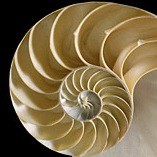Indeed, within the heavens and earth are signs for the believers.
Surah Al-Jathiya 45:3
Before the modern era, “evidence” was usually thought of as something outstanding that showed us a truth, like guideposts. The flights of birds, the way ships float on water, the huge variety of colors and characteristics of plants and animals, all these and more are mentioned in the Quran as “signs,” often “signs for those who reason.” These signs provide evidence of Allah’s relationship with all life, indeed with all creation, and in turn, of the complex interrelationships within creation itself. Such signs are dismissed in today’s dominant culture of empiricism as vague or lacking the rigor of scientific proof; but science by definition avoids the “unscientific” search for meaning as that which gives direction and value to life.
In this PDF download, the Quran’s architecture and its relationship to the Zodiac as a celestial view of the sky as seen from earth and its use for timekeeping is discussed.






